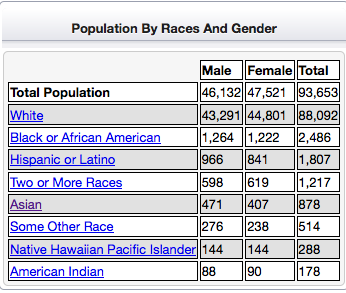Encyclopedia Dubuque
"Encyclopedia Dubuque is the online authority for all things Dubuque, written by the people who know the city best.”
Marshall Cohen—researcher and producer, CNN
Affiliated with the Local History Network of the State Historical Society of Iowa, and the Iowa Museum Association.
ASIAN AMERICAN
ASIAN AMERICAN. The most commonly used definition of Asian American is the US Census Bureau definition of Asian as people with origins in the Far East, Southeast Asia and the Indian Subcontinent. They include Chinese, Filipino, Indian, Vietnamese, Korean, Japanese, Cambodian/Khmer, Pakistani Americans and others whose national origin is from the Asian continent.
A century ago, most Asian Americans were low-skilled, low-wage laborers and targets of discrimination. Today they are the most likely of any major racial or ethnic group in America to live in mixed neighborhoods and to marry across racial lines. (1) Asian Americans are the highest-income, best-educated and fastest-growing racial group in the United States. They are more satisfied than the general public with their lives, finances and the direction of the country, and they place more value than other Americans do on marriage, parenthood, hard work and career success. (2)
The modern immigration wave from Asia is nearly a half century old and has pushed the total population of Asian Americans—foreign born and U.S born, adults and children—to a record 18.2 million in 2011, or 5.8% of the total U.S. population, up from less than 1% in 1965.3 By comparison, non-Hispanic whites are 197.5 million and 63.3%, Hispanics 52.0 million and 16.7% and non-Hispanic blacks 38.3 million and 12.3%. (3)
Despite often sizable subgroup differences, Asian Americans are distinctive especially when compared with all United States adults, whom they exceed not just in the share with a college degree (49% vs. 28%), but also in median annual household income ($66,000 versus $49,800) and median household wealth ($83,500 vs. $68,529). (4)
According to the Pew Research Center survey of a nationally representative sample of 3,511 Asian Americans, conducted by telephone from Jan. 3 to March 27, 2012, in English and seven Asian languages, they are more satisfied than the general public with their lives overall (82% vs. 75%), their personal finances (51% vs. 35%) and the general direction of the country (43% vs. 21%). (5)
More than half (54%) say that having a successful marriage is one of the most important things in life; just 34% of all American adults agree. Two-thirds of Asian-American adults (67%) say that being a good parent is one of the most important things in life; just 50% of all adults agree. (6)
They are more likely than all American adults to be married (59% vs. 51%); their newborns are less likely than all U.S. newborns to have an unmarried mother (16% vs. 41%); and their children are more likely than all U.S. children to be raised in a household with two married parents (80% vs. 63%). (7)
They are more likely than the general public to live in multi-generational family households. Some 28% live with at least two adult generations under the same roof, twice the share of whites and slightly more than the share of blacks and Hispanics who live in such households. U.S. Asians also have a strong sense of family respect; about two-thirds say parents should have a lot or some influence in choosing one’s profession (66%) and spouse (61%). (8)
Asian Americans have a strong belief in the rewards of hard work. Nearly seven-in-ten (69%) say people can get ahead if they are willing to work hard, a view shared by a somewhat smaller share of the American public as a whole (58%). 93% of Asian Americans describe members of their country of origin group as “very hardworking”; just 57% say the same about Americans as a whole. (9)
The following charts indicate population demographics in Dubuque County: (10)
---
Source:
1. "The Rise of Asian Americans," Pew Research Center. Online: http://www.pewsocialtrends.org/2012/06/19/the-rise-of-asian-americans/
2. Ibid.
3. Ibid.
4. Ibid.
5. Ibid.
6. Ibid.
7. Ibid.
8. Ibid.
9. Ibid.
10. Urban Stats. Online: https://suburbanstats.org/population/iowa/how-many-people-live-in-dubuque-county



